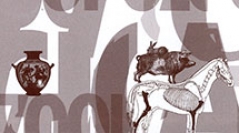

 Anthropozoologica
48 (1) - Pages 53-73
Anthropozoologica
48 (1) - Pages 53-73Zooarchaeologists continue to experience difficulty defining the importance of bowhead (Balaena mysticetus) whaling in Neoeskimo coastal deposits. The large size of bowhead bones, combined with their use as structural elements in Neoeskimo architecture, creates a suite of taphonomic issues that tend to obscure their usefulness as a measure of relative abundance, and thus as an overall economic indicator. Here we present a regional approach that focuses on contrasts in relative taxonomic abundance between sites with diverse economic signatures, supported by related differences in element frequencies, site locations, features, artefact frequencies, and manufacturing detritus. Using this approach, a generalized picture of the relative importance of bowhead whales in Neoeskimo subsistence economies can be assembled. Such an analysis, applied to the archaeological record of the Mackenzie Inuit, or Siglit, reveals the role that bowhead whaling played in subsistence economies from the 15th to 19th centuries AD. Specifically, the archaeological record indicates that the prehistoric Qikiqtaryungmiut and Nuvugarmiut practiced specialized bowhead whaling at coastal promontories, though the seasonal scheduling and success rate of these hunts contrasted considerably.
Mackenzie Inuit, Siglit, Meat weight, Specialization, Bowhead Whaling.